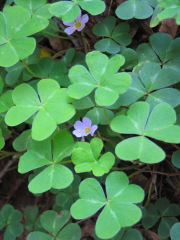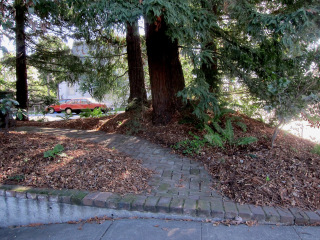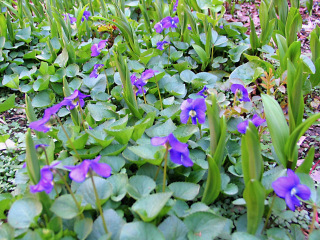Lot size: 1,200 sq. ft. front garden , 80 sq. ft. parking strip, 1600 sq. ft. rear garden, 85% native
Garden Age: this garden was started in 1979
Years on the Bringing Back the Natives Garden Tour: 2
Showcase feature
What Christopher had was a small, Bermuda grass lawn, bisected by a straight concrete path; what he wanted was a garden that would provide cover for the front and side gardens from the busy boulevards adjacent to his corner lot. Nearly thirty years ago Christopher sculpted berms from dirt obtained from a basement creation project, piled several feet of wood chips on his lawn (“This worked great! The chips are so light that when the Bermuda grass comes back you can just lift it out!”), and then, a self-professed “woodland boy at heart,” he planted a number of small redwood trees. The redwood grove, now three stories tall, towers over Christopher’s 1904 Colonial Revival home, shading a variety of shade-loving understory plants, such as salal, wild ginger, redwood sorrel, and Douglas iris. Ask Christopher how he aspired to create the look of natural habitat.
Other Garden Attractions
• The Alameda sand-dune soils have been successfully improved with massive additions of organic materials. The soil is so rich now that some plants grow rampantly. (Ask Chris how he transformed the soil.)
• This shady garden is home to four types of native ferns—sword, leather, licorice, and goldback
• Brick paths allow storm water to drain naturally into the soil.
• Christopher has been experimenting with ways to discourage the invasive, ubiquitous non-native oxalis. (Think bright yellow flower from South Africa; this plant is a problem as it competes with native plants for light and space, and crowds the natives out.)
Gardening for wildlife
Arboreal and slender salamanders live in the garden, and are commonly seen under pots and in the deep mulch.












